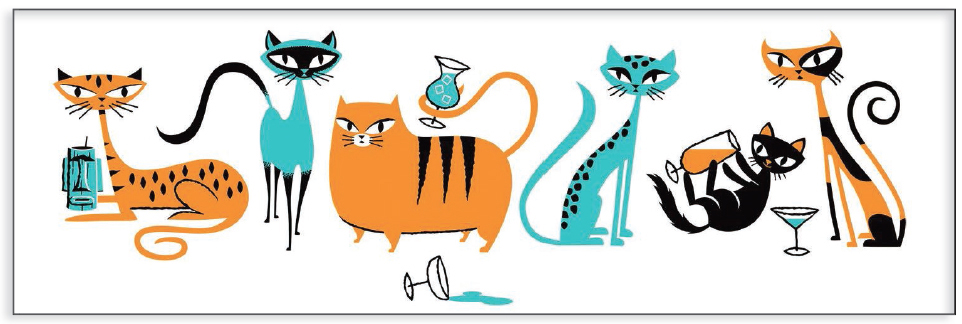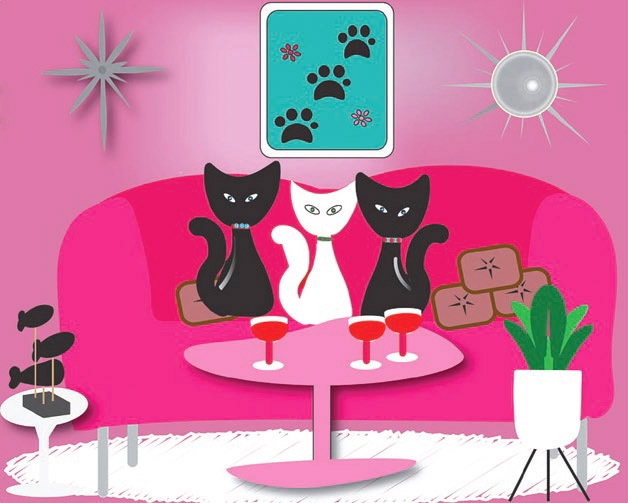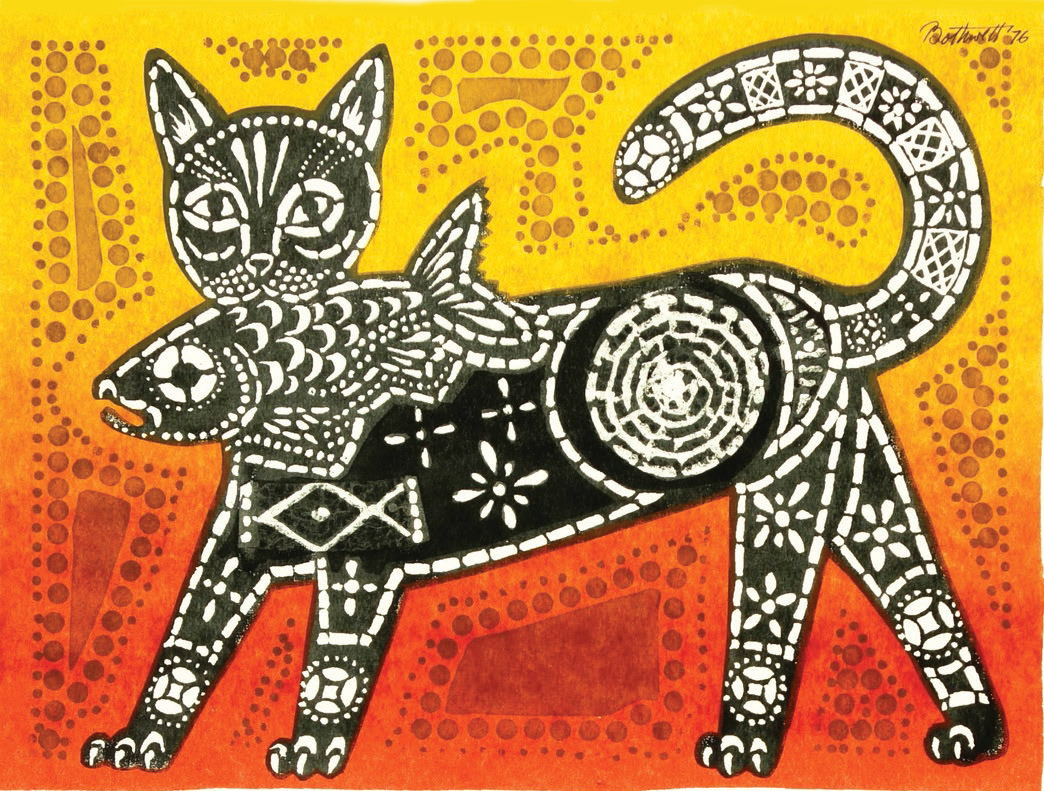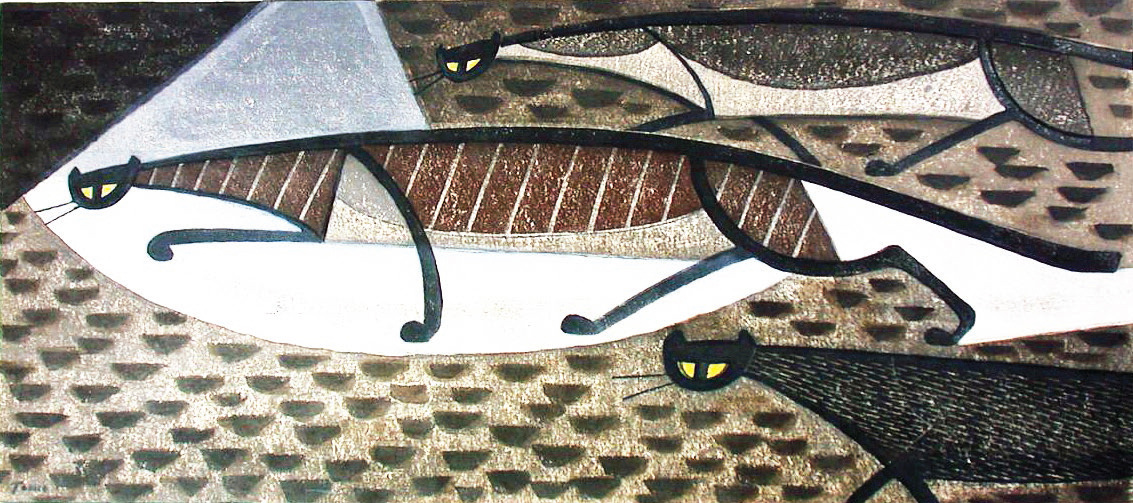
Sophisticated Cats Ruled the Mid-century
 |
Every era, it seems, adopts the mascot that best fits the spirit of the times. During the Art Deco era of the 1920s and ‘30s, it was the gazelle. During the 1950s, as we discover in ‘Sophisticats’ in the new, fall ‘21 issue of CA-Modern magazine, a similarly sleek animal had its day in art and design and in the minds of the people: the simple house cat.
Serious artists and commercial ones alike adopted the cool cat look – smooth, often black but Siamese cats too were popular. There was a bit of the hepcat too, the cool jazz musicians whose style was spreading mainstream.
Cats had become 'sophisticats.'
 |
And cats have not been forgotten during the mid-century modern revival that has been gripping the international scene for the past, oh, is it two decades now?
Josh Agle, the artist who calls himself Shag, helped set off the return to cattiness by placing mysterious, bright-eyed cats in many of his paintings. Prints of Shag paintings are fixtures in so many Eichler and other modern home interiors.
“The thing that inspired the cats in my own art was a bubble bath bottle from my childhood. I had a vague memory of what it looked like, and that memory is what I used to model the cats in my art,” Josh says. “Years later, when I actually saw one of the bubble bath bottles, I realized my memory of it was quite different. It’s still a cool object.”
Barbara Bullington, a North Carolina artist whose oeuvre includes a wide selection of cats, says the animals add complexity to clean-lined designs.
 |
“Often mid-century modern is serious, but with a little bit of whimsy,” she says. “Cats, they’re both. One moment cats could be looking into your eyes and you go back centuries. What are they thinking? And the next second they’re chasing a butterfly, looking like a kitten.”
It’s the simplicity of the cat’s form that attracts Donna Mibus, another contemporary artist whose Shag-inspired prints often feature felines. The black cat, she says, “fits the modern theme so well because he just seems so sleek and modern in his lines. I just love him.”
Another neo-mid-century modern artist who was much inspired by Shag is El Gato Gomez, who, in fact, named herself after a cat. Many of her paintings have featured the feline form. “I tend to focus on cats just because of the aesthetic of cats. Cats are so much cooler than dogs,” she said in a 2013 interview.
 |
During the mid-20th century itself, among artists who featured cats often in their work was the great Pablo Picasso. His 1965 book, 'The Cat Who Had His Nose Out of Joint,’ features “a horrible, huge yellow alley cat, Picasso by name.”
Closer to home, painter Dorr Bothwell (1902-2000), a member of the Mendocino arts community for decades, often used cats as subject matter for paintings and prints in a range of styles, from not quite realistic to mythic (a cat emerging from a conch shell like Botticelli’s 'Birth of Venus') to the folkloric.
She even mounted an all-cat show in 1977, 'All Kinds of Cats,' with serigraphs and collage at Zacha’s Bay Window Gallery in Mendocino.
And in the popular arts and decoration, cats came in all shapes and sizes, from cat clocks to cat-themed glassware to Witco cat wall décor.
Cats were not only popular in art during the mid-20th century, they became increasingly popular in people’s lives.
The popularity of cats as a pet surged in the mid-20th century, says Karen Lawrence, curator of the Feline Historical Foundation, which has a cat museum in Ohio. In its collection is “an appropriate residence for the cat” designed by Frank Lloyd Wright (or an associate) for Wright’s 1954 Tonkens house in Ohio, Lawrence says.
To learn more about why and how cats ruled during the 1950s and ‘60s, check out ‘Sophisticats,’ a sneak preview of the new, fall '21 issue of CA-Modern magazine.
- ‹ previous
- 533 of 677
- next ›



